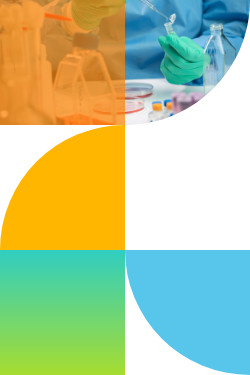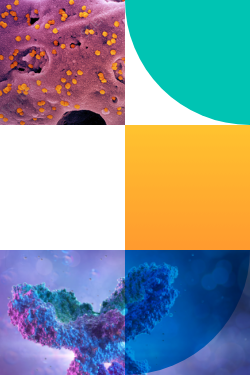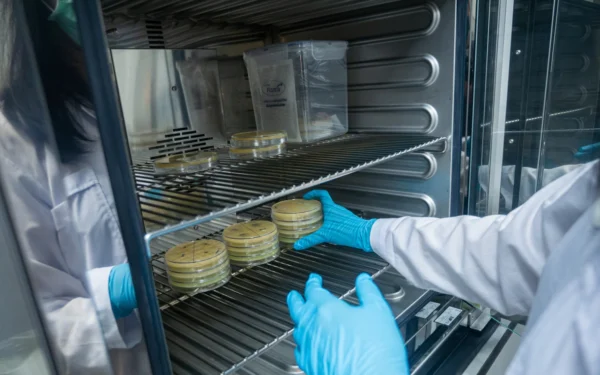Artificial Intelligence (AI) Co-Scientists are no longer a distant concept on the horizon — they are actively reshaping how modern research is planned, executed, interpreted, and shared. Unlike traditional digital tools that act as passive record-keepers or automation scripts, AI Co-Scientists are dynamic participants in the scientific process. Google’s AI Co-Scientist and Google Research are at the forefront of developing these advanced systems. They collaborate with researchers as intelligent partners, offering guidance, generating ideas, automating routine steps, and uncovering hidden insights that might otherwise take months or years to discover.
What sets an AI Co-Scientist apart is its ability to understand the language of science and respond intelligently. Systems like Google’s AI Co-Scientist can turn natural language questions into structured hypotheses, comb through massive volumes of literature in seconds, and integrate seamlessly into existing workflows. They don’t replace the human element of science — creativity, curiosity, and intuition — but instead augment it, allowing researchers to focus their energy on discovery and innovation rather than repetitive, mechanical tasks. The synergy between AI and human ingenuity in scientific research accelerates discovery and enables researchers to tackle complex challenges more effectively.
Below, we explore five transformative ways AI Co-Scientists are redefining the research landscape — streamlining workflows from the first spark of a question to the final peer-reviewed publication. These advances are a game changer for the research landscape, making scientific research more efficient, collaborative, and impactful than ever before.
1. Hypothesis Generation: Smarter Starting Points
Every breakthrough begins with a question — and often, that question is born from a careful review of what is known and what remains uncertain. Traditionally, this process is time-consuming, requiring researchers to sift through vast volumes of literature, databases, and previous experimental results to identify knowledge gaps. AI Co-Scientists supercharge this stage by automating and enhancing it, leveraging web search and academic literature to inform and refine hypothesis generation.
By analyzing enormous datasets, scientific papers, and experimental records, AI Co-Scientists can highlight underexplored questions through advanced pattern recognition, generating hypotheses that may not be immediately apparent to human researchers. They can cross-reference emerging discoveries across disciplines — for example, linking a recent advance in protein folding with a potential drug target in oncology — that a human researcher might not have the bandwidth to notice. These systems can propose scientific hypotheses, and the generated hypotheses can then be tested and refined iteratively, incorporating expert feedback and new data. This proactive generation of hypotheses enables scientists to start their work on stronger footing, informed by the very latest data and trends.
Impact: Faster, more informed hypothesis generation that enables researchers to explore more ambitious ideas, reduces the risk of redundant work, accelerates the early stages of discovery, and benefits from automating the generation of scientific hypotheses.
2. Experiment Design & Setup: From SOPs to Ready-to-Run Protocols
Designing experiments is one of the most critical — and often most tedious — stages of research. Translating standard operating procedures (SOPs) and literature methods into structured, executable protocols can be laborious and error-prone. AI Co-Scientists dramatically reduce this burden by automating the design phase.
Through orchestration by a central “supervisor” agent, an AI tool can coordinate multiple specialized agents to convert a simple prompt — such as “design a CRISPR knockout screen for gene X” — into a full experimental plan. This includes selecting appropriate controls, designing reagent lists, generating plate layouts, and producing instrument-ready files. The AI tool allocates resources among these specialized agents to optimize workflow efficiency and effectiveness. For labs with extensive SOP libraries, the AI can rapidly adapt existing methods to new contexts, ensuring reproducibility and compliance.
Additionally, AI Co-Scientists can personalize protocols based on available equipment, reagent inventory, previous experimental results, and the specific research area, making experimental setup not just faster but also more intelligent and adaptive.
Impact: Hours or even days of setup condensed into minutes, reduced human error, seamless onboarding for new team members, and consistently reproducible study designs across projects and teams. Learn more about how AI is being used in lab informatics.
3. Experiment Execution: Automation Across Instruments
Executing experiments is where complexity often peaks — coordinating instruments, preparing reagents, managing timing, and ensuring data is correctly captured. AI Co-Scientists function as intelligent conductors, orchestrating this entire process across diverse laboratory systems.
They can schedule runs, assign tasks to robotic platforms, prepare instrument input files, and monitor performance in real time. For instance, they might automatically queue a Hamilton robot to prepare samples, configure a sequencing run, and subsequently trigger downstream analysis — all without manual intervention. As results are generated, the AI immediately routes them to the appropriate databases or analysis pipelines, ensuring no data is lost and no steps are missed.
Crucially, this automation is not about replacing technicians but freeing them from repetitive tasks so they can focus on higher-value activities like troubleshooting and method development.
Impact: Dramatic reductions in manual workload, fewer errors, uninterrupted data capture, and the creation of a continuous, integrated experimental pipeline from sample preparation to data output.
4. Data Analysis & Interpretation: From Raw Data to Insight
The explosion of data in modern science — from genomics and proteomics to imaging and high-throughput screening — has made interpretation one of the most time-consuming parts of the research cycle. AI Co-Scientists help turn raw data into actionable insight faster and more accurately than ever. By leveraging automated data analysis and visualization, AI enables researchers to identify key findings within large datasets, making it easier to communicate the most significant results.
Beyond traditional statistical analyses, AI is a powerful tool for data analysis and interpretation. It can apply advanced models to detect subtle trends, identify outliers, and highlight significant patterns that might otherwise go unnoticed. It can perform complex tasks like molecular docking simulations (read more about AI-powered molecular docking), codon optimization, or multi-omics integration within seconds. More importantly, AI can contextualize these results — linking them to relevant literature, suggesting potential mechanistic explanations, or even proposing logical next experiments based on the data’s trajectory.
Impact: Rapid, unbiased data interpretation that supports a “fail fast” approach — allowing researchers to pivot quickly when results don’t align with expectations, and accelerating the overall cycle from experiment to discovery.
5. Collaboration, Documentation & Peer Review: Raising Scientific Rigor
Science does not end with discovery — it advances through collaboration, communication, and validation. AI Co-Scientists are playing an increasingly important role in these final, often overlooked, stages of the research process.
They automatically maintain detailed, audit-ready records of every action taken during an experiment, ensuring full traceability and reproducibility. They can generate publication-ready figures, draft manuscript sections, and even suggest alternative interpretations or missing controls before peer review begins. The use of AI in these processes offers significant benefits, such as vastly improving research efficiency, uncovering novel insights, and accelerating scientific discovery across various fields. By scanning across vast interdisciplinary datasets, AI can surface emerging trends and connections that might inform collaborative projects or strategic research directions.
Research teams use AI to enhance collaboration and peer review by streamlining communication, sharing insights, and facilitating more effective interdisciplinary teamwork. AI can also serve as a “pre-review” tool, flagging statistical inconsistencies, identifying methodological weaknesses, or suggesting additional experiments — strengthening manuscripts before submission and increasing their chances of acceptance.
Impact: Stronger interdisciplinary collaboration, enhanced reproducibility and transparency, higher-quality publications, and greater trust in scientific results.
6. Streamlining Research Papers: AI as Your Scientific Editor
The process of preparing research papers has traditionally been a painstaking endeavor, requiring countless hours of data analysis, statistical review, and careful crafting of hypotheses and arguments. Today, artificial intelligence is transforming this landscape, acting as a scientific editor that streamlines every stage of the writing and editing process. AI Co-Scientists, powered by advanced machine learning algorithms and natural language processing, can automate many of the most tedious tasks—freeing researchers to focus on the creative and conceptual aspects of their work.
For example, Google’s AI Co-Scientist can assist researchers by rapidly analyzing experimental data, performing robust statistical analysis, and even suggesting novel hypotheses based on the latest findings. These AI tools can help optimize research proposals, ensuring that experimental designs are both innovative and methodologically sound. When it comes time to write, AI can generate clear, well-structured drafts, flag inconsistencies, and recommend improvements, all while referencing the most relevant literature.
Impact: By leveraging AI in the preparation of research papers, scientists can accelerate the discovery process, improve the quality and clarity of their manuscripts, and increase the likelihood of their work contributing to significant scientific breakthroughs.
Real-World Applications: AI Co-Scientists in Action
The transformative power of AI Co-Scientists is already being realized in laboratories and research centers around the world. In biomedical research, for instance, AI Co-Scientists have played a pivotal role in accelerating the discovery of new drug candidates for acute myeloid leukemia (AML), identifying novel treatment targets through sophisticated epigenetic analysis. In some cases, these AI systems have even rediscovered key biological mechanisms—such as bacterial evolution—before they were published by human researchers, underscoring their immense potential to generate hypotheses and advance scientific knowledge.
Beyond biomedicine, AI Co-Scientists are making significant contributions in materials science, where they help optimize experimental design and analyze complex datasets to uncover promising research directions. Research teams across different disciplines are using AI to assist with everything from generating testable hypotheses to extracting meaningful insights from vast amounts of data. By integrating AI Co-Scientists into their workflows, scientists are able to accelerate research, tackle complex global challenges, and foster greater collaboration within the scientific community.
As more researchers embrace these powerful AI tools, the benefits are becoming increasingly clear: faster scientific discovery, higher-quality research, and a more interconnected scientific enterprise. The future of science is collaborative, and with AI Co-Scientists as partners, the pace and impact of scientific breakthroughs are set to reach new heights.
Conclusion
By embedding intelligence across every phase of the research lifecycle — from hypothesis generation to peer review — AI Co-Scientists transform research from a fragmented, manual process into a continuous, insight-driven journey. These intelligent systems are already proving their value in fields like drug discovery, where they have accelerated the repurposing of existing drugs for new therapeutic uses, including breakthroughs in diseases such as acute myeloid leukemia. Collaborative efforts like the Fleming Initiative and Imperial College London are at the forefront of AI-driven research, demonstrating how partnerships can further advance these innovations.
The future of science is not about replacing researchers but empowering them. With AI Co-Scientists as partners, scientists can focus on what humans do best: creativity, intuition, and transformative thinking. Meanwhile, AI takes on the heavy lifting of data analysis, experimental orchestration, and information synthesis — making the scientific enterprise faster, more collaborative, and more impactful than ever before. AI Co-Scientists help accelerate scientific discovery by supporting the scientific method, enabling iterative hypothesis generation, evaluation, and refinement.
Tools like Semantic Scholar and AI-augmented literature search engines demonstrate how these technologies already enhance research quality and relevance. As we enter this new era, the most powerful discoveries will come not from humans or AI alone, but from their collaboration — a future where scientist and AI Co-Scientist work side by side to accelerate discovery and reshape the frontiers of knowledge.





